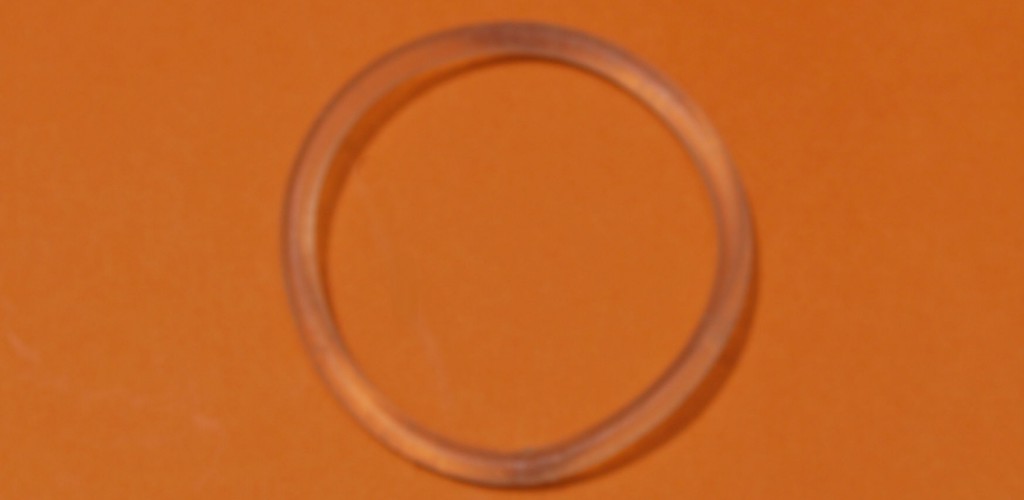The Ring
What is the birth control ring?
- The birth control ring (sometimes called Nuvaring) is a thin plastic ring containing 2 hormones (estrogen and progestin) that you put inside your vagina*.
How does the ring prevent pregnancy?
- In order to get pregnant, sperm must enter your vagina, swim up into your uterus and fertilize an egg that has been released from your ovaries during ovulation. The ring prevents you from ovulating.
- The ring thickens the mucus on your cervix (the opening to your uterus). This makes it harder for sperm to travel into your uterus and fertilize an egg.
- The ring thins the lining of your uterus (the endometrium). This makes it harder for a fertilized egg to implant in your uterus and become a pregnancy.
How effective is the ring?
- The ring is 99% effective. This means that if 100 people used the ring correctly for one year, only one person would get pregnant.
- Because the ring may be used incorrectly, it is closer to 92% – 97% effective with typical use.
- If you use the ring incorrectly, your risk of getting pregnant increases.
How do you use the ring?
- The ring works on a 28-day (4 week) cycle. You will insert one ring, leave it in for 3 weeks and then remove it for one week.
- After that “ring-free” week is over, you insert a new ring and the cycle starts all over again.
- Week 1: put one ring into your vagina. Leave it in for 21 days (3 weeks).
- Week 4: on day 22, remove your ring. Put the used ring into the foil pouch it came in and throw it away. The next 7 days (week 4) will be “ring-free”. You can expect your period sometime during this week.
- At the end of that 7 day ring-free week, insert a new ring.
- Remember, you are protected from pregnancy during the ring-free week as long as you have been using your ring correctly and you insert your next ring on time.
- Some people use the ring continuously (no ring-free week) to avoid having their period, sometimes called “stacking”. If you are interested in doing this, speak to your clinician first.
- If you are late removing your ring or late inserting a new ring, consult the instructions in your ring package and/or call your clinician to see if you need to come in for an appointment and/or use a back-up method of birth control for 7 days.
How to start the ring
- If you decide, along with your clinician, that the ring is right for you, they will write you a prescription. You can purchase your rings at a pharmacy (approximately $30/month) or at PPT’s Health Services (approximately $10/month).
- If you start the ring within the first 5 days of getting your period, you are protected from pregnancy right away.
- If you start the ring 6 or more days after getting your period, you are not protected from pregnancy until you have been using the ring for a full week. To avoid pregnancy during this time, use a back-up method of birth control like condoms or spermicides.
- A clinician may recommend that you use a back-up method of birth control for a longer period of time when you start the ring.
- Some people like to start the ring on the first Sunday following the start of their period, whether they are still bleeding or not. This will likely keep you from getting future periods on the weekend.
How do you insert the ring?
- Get into a comfortable position. It may help to put one foot up on a chair, lie down or have your partner insert the ring.
- If you have a physical disability, you may need a partner or support person to help you insert and remove the ring.
- Using clean, dry hands, pinch the sides of the ring together to make an oval. Gently push the ring into your vagina as high as you can. You should not feel the ring once it has been inserted.
- There is no specific position the ring needs to be in – as long as it is inserted high enough so that you don’t feel it, it will work. You cannot lose the ring in your vagina and it cannot get stuck.
What are the side effects of the ring?
- You may experience minor side effects such as nausea, sore breasts*, irritation in your vagina and/or spotting (a little bit of bleeding that is lighter than your period). These usually go away within the first 3 months of using the ring.
- If after 3 months you are still experiencing side effects or your side effects are severe, you may want to try a different method.
- There is a rare risk of getting blood clots or having a heart attack or stroke while using the ring. Smoking, obesity, and other health conditions increase this risk. Speak to your clinician for more information.
- Signs of a blood clot include: blurred or loss of vision, chest pain or difficulty breathing, migraine headaches, severe abdominal cramps, or severe pain in the leg. If you experience any of these symptoms, get medical attention right away.
Advantages of the ring
- If you use the ring correctly, your chances of getting pregnant are very low.
- You don’t have to do anything before or after you have sex.
- You don’t have to do something every day.
- You are less likely to have side effects than you are with the pill.
- Your period will likely become shorter, lighter, less painful, and more regular.
- The ring can improve acne and increase bone strength.
- It doesn’t affect your ability to get pregnant in the future.
- Your partner(s) don’t have to be involved. A partner may feel the ring during sex but it doesn’t hurt or interfere with pleasure.
- The ring lowers your risk of ovarian and endometrial cancer.
Disadvantages of the ring
- You have to remember to remove and insert a new ring.
- If the ring is out for more than 3 hours, if you forget to take it out after 3 weeks, or if you forget to insert a new one after your ring-free week, your risk of getting pregnant increases and you may need to use a back-up method of birth control for seven days (one week).
- You have to be comfortable touching the inside of your vagina.
- You may experience side effects.
- You may not be able to use the ring if you have certain health problems.
- If you have a personal and/or family history of breast cancer or you are HIV positive, talk to your clinician for more information.
- If you smoke and you use the ring, there is an increased risk of getting a blood clot.
- You need a prescription.
- It can be expensive. However, PPT’s Health Services sells the ring at a reduced cost.
- The ring doesn’t protect you from sexually transmitted infections.
For a downloadable resource on this topic, please visit Planned Parenthood Toronto Factsheet Database.
If you have questions about this topic, feel free to contact one of our peer educators. [Link]
*We know that these aren’t the words everyone uses for their bodies (eg. trans folks), and support you using the language that feels best for you.
Last Edited: May 2020






